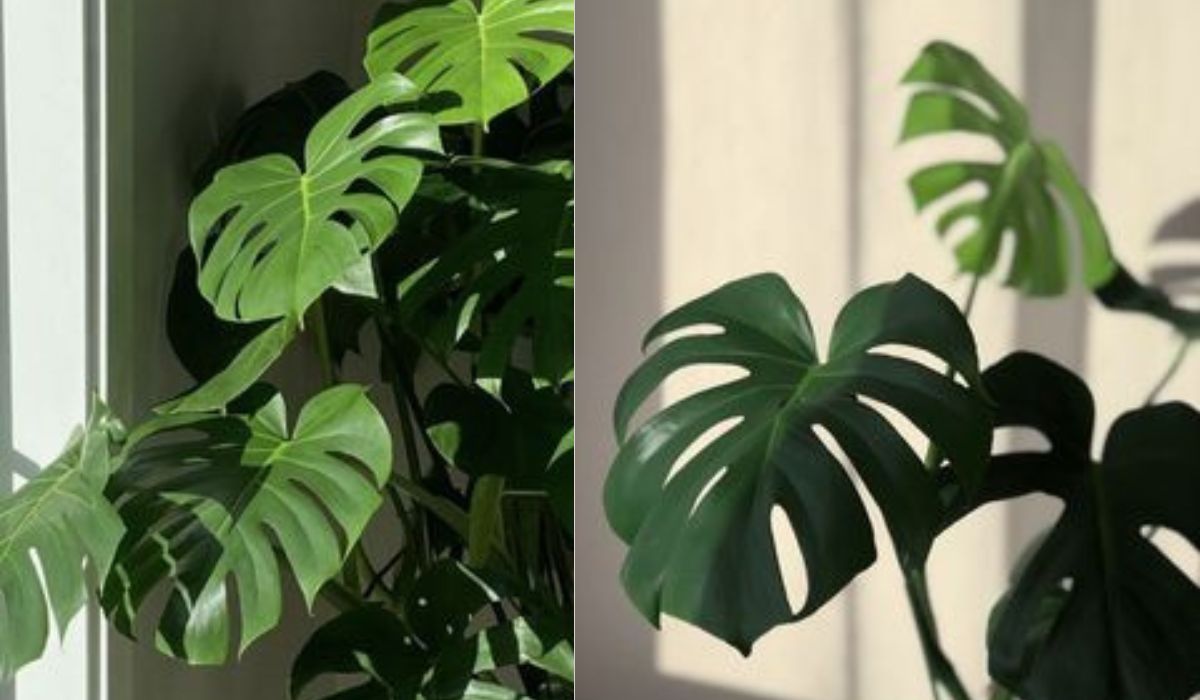Monstera is a beautiful houseplant that has won the hearts of plant lovers all around the world. Monstera’s unique leaf patterns and low care requirements have made it a popular option among seasoned green thumbs and first-timers alike. In this post, we’ll learn about where Monstera came from, its special characteristics, growth and care advice, typical problems and how to fix them, style and decorating suggestions, and more.
The Origins of Monstera
Monstera, or Monstera deliciosa as it’s known in its scientific name, is a member of the Araceae family and is native to the humid forests of Central America. The Latin origin of the name alludes to the immense size of the plant’s leaves. Monstera vines in their native habitat can reach heights of 70 feet, but as a houseplant, they often only get to be 6-10 feet tall. Elegant Monstera foliage features huge, glossy green leaves with unusual splits and holes, contributing to the plant’s widespread acclaim.
Monstera’s Unique Features
The leaves of the Monstera’s plant, often known as “Swiss cheese plants” for their distinctive design, are the plant’s main draw. Monstera’s stands out from other plants thanks to the fenestrations and perforations that decorate its leaves. These slits are functional in the wild because they allow more light to reach the plant and provide less wind resistance. Furthermore, Monstera’s leaves change shape as they mature, changing from little heart-shaped leaves to the distinctive fenestrations as the plant ages.
Growing and Caring for Monstera
If you want your Monstera to thrive, you’ll need to give it some special attention. Key considerations include the following:
Choosing the Right Location
Monstera is happiest in regions with filtered sunshine or partial shade, thus these are the conditions in which it will thrive. The leaves can easily be scorched by direct sunlight, therefore it’s better to keep it out of the sun. Windows facing east or north are preferable.
Watering and Humidity
Monstera prefers soil that is somewhat damp, but it is essential to let the top few inches of soil dry out between waterings. When plants are over- or under-watered, the roots decay and the foliage wilt, respectively. Misting the leaves or using a humidifier will help this plant thrive, especially in drier climes.
Soil and Fertilizer
Monstera’s requires soil with good drainage to thrive. The best combination of water retention and drainage can be achieved with potting soil, peat moss, and perlite or orchid bark. Once a month throughout the growing season, treat the plant with a balanced houseplant fertilizer to encourage lush, lush growth.
Pruning and Propagation
Monstera can be kept in check in terms of size and form with regular pruning. Get rid of any leaves that are damaged or yellow and cut back on the overgrowth for fuller plants. In addition, spreading monstera’s is simple. Stem cuttings can be rooted in water or planted immediately into moist soil to produce new plants.
Common Issues and Troubleshooting
Monstera is tough, yet it still has its vulnerabilities. Some frequent problems and their solutions are listed below.
Pest Infestation
Most commonly, Monstera’s is attacked by mealybugs and spider mites. A moist cloth or insecticidal soap can be used to treat these infestations on the leaves. If you want to catch pests early, you need to inspect your plant frequently.
Leaf Browning
A number of environmental variables, including too much or too little water, too little humidity, or too much direct sunlight, can cause leaf browning. Leaf browning can be prevented and treated by adjusting lighting, watering, and humidity levels.
Yellowing Leaves
Overwatering or a lack of nutrients could cause the leaves to turn yellow. Determine how wet the soil actually is and then water accordingly. Apply a complete fertilizer to the soil around the plant if necessary to restore lost nutrients.
Styling and Decorating with Monstera
Because of its unusual appearance and thick, lush leaves, monstera is often used as an accent plant in the home. It looks good with both modern and bohemian decor. The cascading tendrils of a Monstera plant would look great in ornamental pots or hanging baskets. The plant can be trained up trellises or moss poles for an eye-catching vertical garden.
Benefits of Having Monstera at Home
Monstera, besides being a beautiful addition to your home, also has practical uses. It does a good job of cleaning the air by reducing pollution and making more oxygen available. With Monstera around, you may expect a more tranquil and stress-free environment. In addition to the health benefits, keeping Monstera plants is a satisfying activity that will bring you closer to nature.
Final Thoughts
Monstera’s beautiful leaves and simple care routine make it a great houseplant. If you give Monstera the attention it deserves, it will reward you with its stunning beauty and a host of other benefits. Why hold off? Start your path to a more sustainable lifestyle with Monstera right now.
FAQs
How often should I water my Monstera?
The top several inches of soil should feel dry before you water your Monstera. Root rot is caused by overwatering, so be careful.
Can I place my Monstera’s in direct sunlight?
Monstera’s likes bright light, although its leaves will burn if exposed to strong sunshine. Choose locations with a mix of light and shade.
How do I propagate my Monstera’s?
Monstera’s stem cuttings can be easily propagated in water or by planting them immediately into damp soil.
Why are the leaves of my Monstera turning yellow?
Overwatering and nutritional deficits can both cause leaf yellowing, as discussed on page A4. Determine how wet the soil actually is and then water accordingly. Apply a complete fertilizer to the soil around the plant if necessary to restore lost nutrients.
Can I place my Monstera outdoors?
Although Monstera’s is more at home indoors, it may be grown outside in somewhat shaded locations with indirect sunshine. Check if the humidity and temperature are good for the plant.











